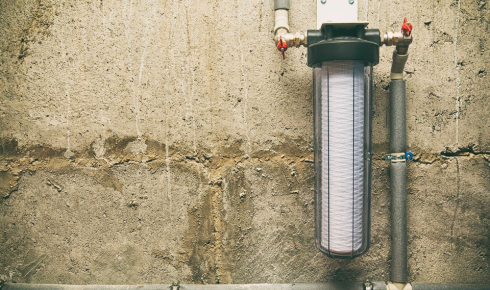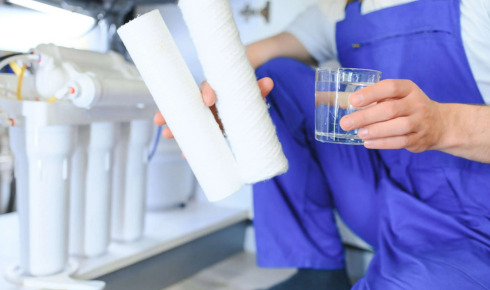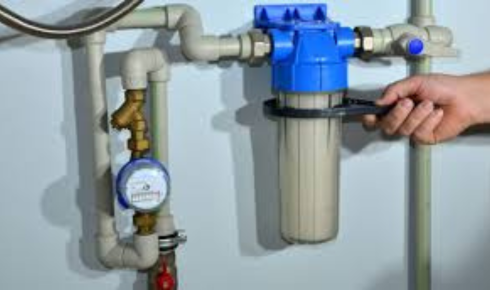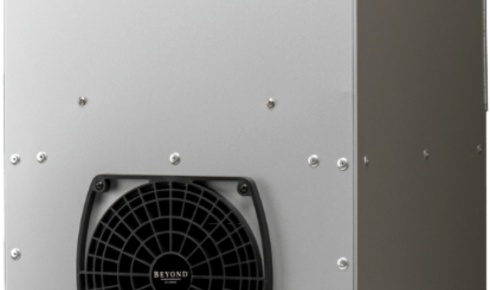Clean water is one of those things we take for granted—until something goes wrong. A strange taste, cloudiness, or a sudden drop in water pressure is often the first sign that your filtration system isn’t performing as it should. And yet, one of the most overlooked aspects of maintaining healthy water at home is knowing how often should a water filter be changed. It’s a simple question, but the answer depends on several factors, including the type of filter, water source, and usage habits.
I remember when I first installed a water filtration system in my home. At the time, I assumed it would work indefinitely, that it was some kind of magical device that would purify water endlessly. Within a few months, I started noticing subtle changes: my coffee tasted slightly off, ice cubes weren’t as clear, and the tap water seemed less crisp. That’s when I realized how important timely filter replacement really is. Not doing so doesn’t just impact taste—it can compromise water quality and even reduce the lifespan of your plumbing or appliances.
Why Timely Filter Replacement Matters
Water filters are designed to remove contaminants, sediment, chlorine, and sometimes heavy metals or bacteria. Over time, the media inside the filter becomes saturated and less effective. Using a clogged or old filter is essentially like running water through a sieve full of dirt—it may look clean, but it’s not doing its job properly.
Knowing how often to change well water filter is particularly important for homes that rely on private wells. Well water can contain a variety of impurities, from sediment to bacteria, and filters play a crucial role in keeping the water safe for drinking and daily use. Neglecting replacements can lead to reduced flow, unpleasant taste or odor, and in worst-case scenarios, exposure to harmful contaminants. Regular changes keep your system efficient, your appliances protected, and your water safe for everyday consumption.
Understanding Different Types of Filters
Not all water filters are created equal, and their lifespan varies depending on type and usage. Here’s a quick overview:
- Carbon filters: Common in pitchers, under-sink, and faucet-mounted systems, these typically last 3–6 months depending on water quality and usage.
- Sediment filters: Often used in well water systems, these capture dirt, rust, and sand. Replacement may be needed every 6–12 months or sooner if water contains heavy sediment.
- Reverse osmosis systems: Multi-stage filters, with pre-filters usually replaced every 6–12 months, and RO membranes every 2–3 years.
- Whole-house filters: Designed to treat all incoming water, these may require replacement from 6 months to a year, depending on water quality, household usage, and system design.
Local water conditions can significantly affect filter lifespan. High mineral content, sediment, or contaminants may saturate filters faster, meaning a replacement schedule that works for one household may not apply to another. Observing water quality and flow is just as important as following manufacturer guidelines.
Signs Your Water Filter Needs Changing
Even if your filter isn’t yet at the suggested replacement date, certain signs can indicate it’s time for a change:
- Reduced water flow or pressure
- Unpleasant taste or odor in water
- Cloudy or discolored water
- Visible buildup in appliances like ice makers, coffee machines, or refrigerators
Recognizing these signs ensures you don’t wait too long. Filters that are past their prime not only fail to clean water effectively but can also become a breeding ground for bacteria if neglected for too long.
Making a Replacement Routine
Establishing a routine for filter replacement helps avoid surprises. Many homeowners prefer a calendar-based approach—replacing filters every 3, 6, or 12 months depending on the type. Others adopt a more observational approach, relying on taste, odor, or flow changes to determine the timing.
Personally, I’ve found combining both methods works best. I set reminders based on manufacturer recommendations but also pay attention to subtle changes in water quality. For example, knowing how often should you change your whole house water filter ensures my entire system remains efficient and my water consistently clean. This approach prevents sudden issues and keeps maintenance manageable without feeling overwhelming.
The Impact on Health and Appliances
Replacing filters isn’t just about aesthetics or taste—it directly affects health and the longevity of your appliances. Filters that are saturated with contaminants may no longer remove harmful bacteria, heavy metals, or chlorine effectively, reducing water safety for cooking, drinking, and bathing.
Appliances like dishwashers, coffee machines, and water heaters also benefit from clean water. Mineral buildup from untreated or poorly filtered water can shorten appliance lifespan, reduce efficiency, and increase energy costs. A fresh filter reduces these risks, helping your appliances run smoothly and saving money over time.
Environmental and Financial Considerations
Timely filter replacements also make sense environmentally and financially. A clogged filter may force systems to work harder, consuming more energy and potentially leading to more frequent repairs. Replacing filters regularly keeps water flowing efficiently and minimizes waste, both in energy and water consumption.
Many manufacturers now offer recycling programs for used filters, which further reduces environmental impact. Making a habit of proper disposal or recycling ensures that maintaining clean water doesn’t come at the cost of sustainability.
Tips to Maximize Filter Lifespan
While eventual replacement is unavoidable, a few strategies can extend the life of your filters:
- Pre-filter sediment: If your water contains a lot of sediment, a pre-filter can protect the main filter from overloading.
- Flush new filters: Run water through a fresh filter before use to remove loose particles and improve efficiency.
- Monitor household usage: Heavy water use shortens filter life. Keeping track can help you plan replacements more accurately.
- Follow manufacturer guidelines: Recommendations are based on extensive testing and provide a reliable baseline.
Using these tips alongside a replacement schedule ensures optimal performance without unnecessary waste.
Personal Experience: The Difference Scheduling Makes
In my household, we have both a well water system and a whole-house filter. Initially, I didn’t pay much attention to replacement intervals, assuming I’d notice if the water quality declined. After a few minor incidents—like slightly cloudy ice cubes and a faint metallic taste in drinking water—I realized that proactive replacements were necessary.
Now, I track installation dates and replace filters according to both manufacturer recommendations and observation. The difference is remarkable. Water consistently tastes fresh, appliances function better, and there’s peace of mind knowing that my family’s water is safe. Taking this small step has saved both time and money in the long run.
Final Thoughts
Understanding how often should a water filter be changed is more than just a maintenance tip—it’s a key part of ensuring safe, clean, and reliable water in your home. Whether you rely on well water, city water, or a whole-house system, paying attention to replacement intervals keeps water tasting fresh, appliances protected, and your household healthy.




